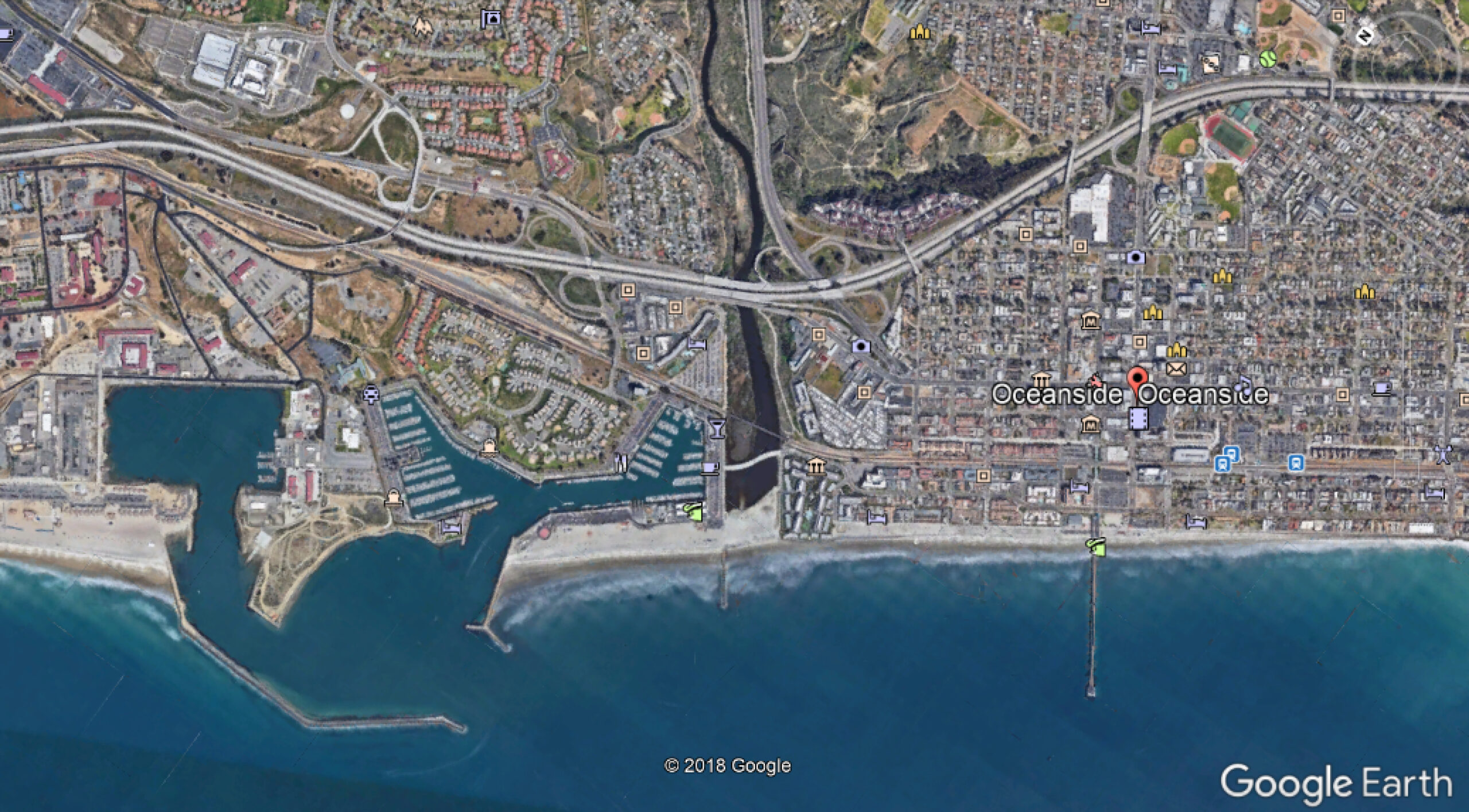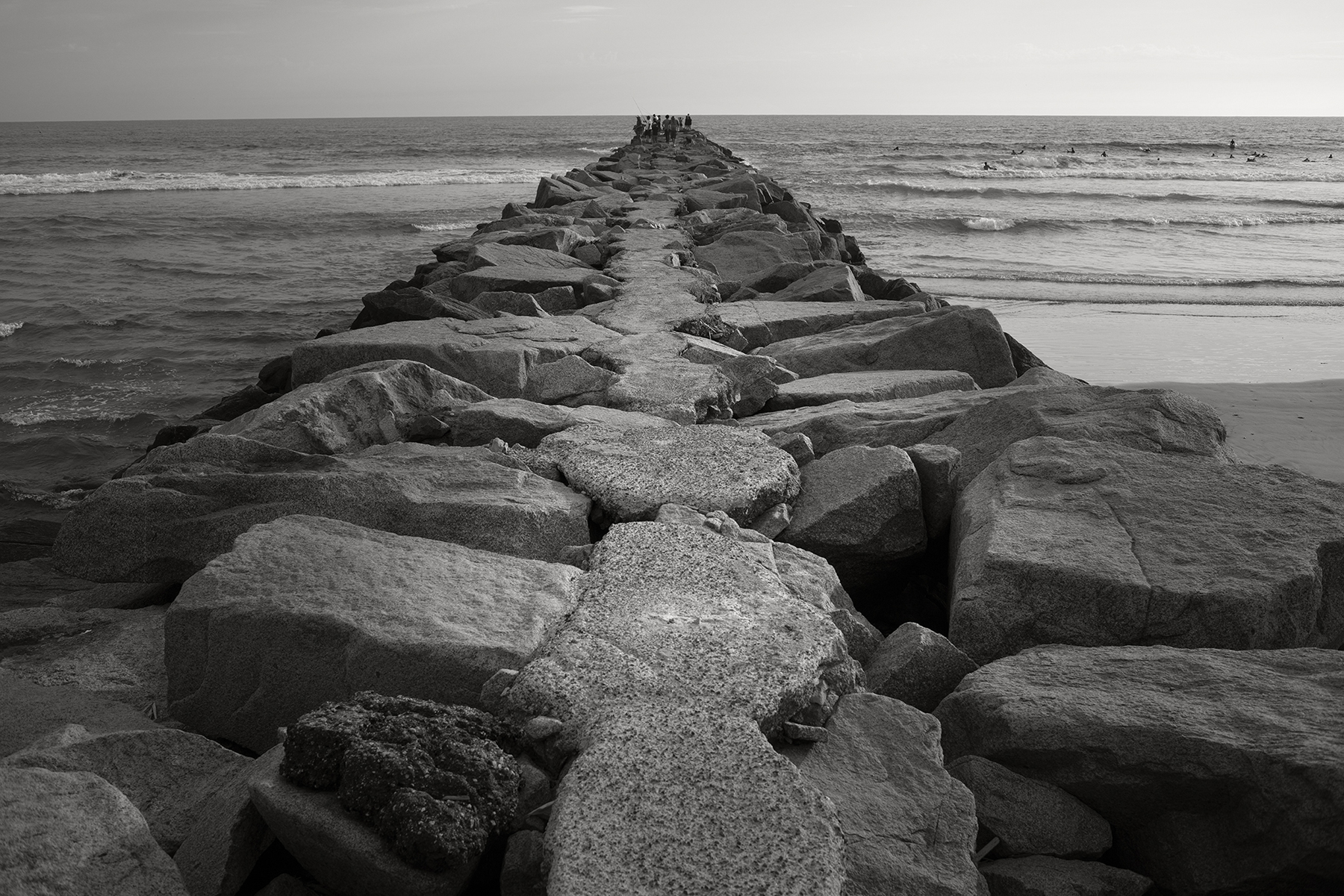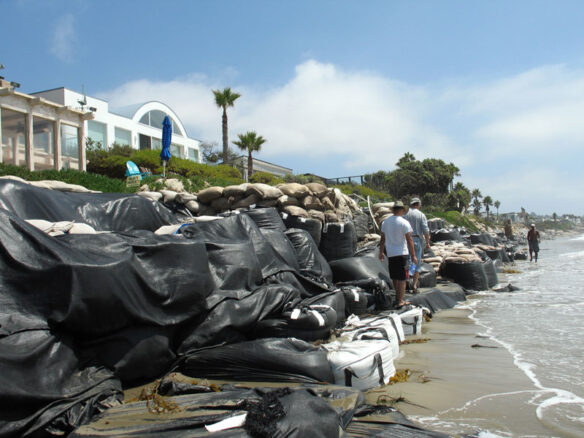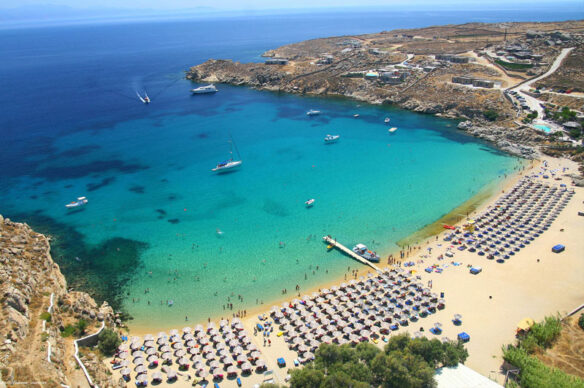Growing up, I always imagined the beach to be a natural place. I think it’s safe to say that this sentiment may be pretty common among many beachgoers. It’s easy to think of the beach as being somewhat “natural,” or at least close to that thing some people call “nature.”
This is a short piece, so I won’t go down the what is natural? rabbit hole for now. By natural I mean something along the lines of “not caused or created by human intervention.” So here’s the thing: many beaches are actually far less “natural” than many people assume or know.
I’ll give you an example. Take the beaches of Oceanside, California, where I spent some time doing research this past summer. Oceanside has nice beaches, and lots of people like to visit them. Those beaches bring in tourists, and money. They are also very popular for many local residents, for a variety of uses and purposes. But let’s look back at the more recent histories of Oceanside’s coastline, starting with the first large-scale human-induced coastal changes in the late 19th century.
In 1888, a 1000-foot wharf was built in Oceanside. In 1890, the wharf was destroyed and rebuilt; this structure was in place until around 1920. In 1922, Lake Henshaw was dammed, which resulted in a severe reduction in sand supply. In 1927 a new pier was built, this one at the location where there is still a pier today. Then, in 1942, the Federal government built the Del Mar Boat basin, a process that also included the dredging of 1.5 million cubic yards of sediment. Another 220,000 cubic yards of sand were dredged from the entrance channel of this boat basin in 1945. Another dam, this one at Vail Lake, was completed in 1949. During the same year the city put in a 1000-foot stretch of riprap south of Oceanside pier. In 1952 two groins were installed. In 1957, another 800,000 cubic yards of sand were dredged and placed on downcoast beaches to alleviate erosion problems. The city installed a small groin at the mouth of the San Luis Rey river in 1961 (above), and a small craft harbor was completed in 1963. This process included the dredging of 2.9 million cubic yards of sand that were placed on beaches to the south. From the 1970s until 2001, more than 8 million cubic yards of sand were pumped onto Oceanside’s beaches.[1]
That was a ton of information, to the point of overkill, but I’ve included all those details to make a point. Oceanside’s beaches, like many beaches around the world, are not simply pristine, untouched natural spaces. They are the results of human interventions that led to cascading effects: The dams and harbors severely reduced the sand supply of downcoast beaches (Kuhn and Shepard 1984), resulting in coastal erosion and shorter beaches over time. As beach tourism demand and popularity grew, cities such as Oceanside sought to maintain their sandy shorelines (and protect coastal properties), often through a combination of armoring (i.e. seawalls, riprap, etc.) and the artificial nourishment of beach sand.

If you look closely at the aerial image of Oceanside’s coast (above), from left to right you can see 1) the 1942 Del Mar Boat Basin; 2) The small boat harbor that was built in the 1960s; 3) the groin at the mouth of the San Luis Rey River; and 4) the Oceanside pier further down the coast. Notice that there is sand built up on the upcoast sides of these structures (especially the boat basin, harbor, and groin), and that the sandy beaches dwindle as you move to the right. These days, the southernmost coast of Oceanside has little to no sand whatsoever (below).

Such patterns are not uncommon. Today, around 240 km (13.9%) of the state of California’s coastline is armored; in southern California alone that percentage jumps to 38% (Griggs and Patsch 2019). This percentage has grown substantially in the past few decades: in the early 1970s, only around 2.5% of California’s 1760km coast was armored (Griggs and Patsch 2019). Why all this armoring? It’s due to growing coastal populations, increased development, patterns of coastal management, and of course other factors, such as slowly rising seas.
This brings me back to the question of nature. Who cares if the beaches in Oceanside or any other coast around the world is a product of human intervention? Why does any of this matter? Well, around 3 billion people live within 100 miles of a coastline today (Griggs and Patsch 2019), and this isn’t going to change anytime soon. There is indeed a tremendous amount of investment, attachment, and entrenchment in these coastal spaces. And those rising seas aren’t going to be stopping either. What this means, in the future, is that there are going to be many, many more conversations—and conflicts—about sea level rise, erosion, and what should be done. Some of these conversations may be framed in terms of trying to conserve or save natural spaces; in some cases this kind of framing is perhaps appropriate. But in others, where humanity and nature are entangled in more of a complex admixture (which is likely more often then we might assume), the question may rather be more along the lines of whose beach and which nature (as Gesing 2017 puts it) will be protected, created, or maintained. This distinction matters, especially as humanity slowly grapples with the “politics of the anthropogenic” (Sayre 2012)—including those rising tides—in the coming years.
References
Gesing, F., 2017. Whose Beach, Which Nature? Coproducing Coastal Naturecultures and Erosion Control in Aotearoa New Zealand. In Environmental Transformations and Cultural Responses (pp. 125-156). Palgrave Macmillan, New York.
Griggs, G. and K. Patsch, 2019. California’s coastal development: Sea-level rise and extreme events—where do we go from here? Shore & Beach, 87(2), 15-28. https://doi.org/10.34237/1008722
Kuhn, G.G. and Shepard, F.P., 1984. Sea Cliffs, Beaches, and Coastal Valleys of San Diego County: Some Amazing Histories and Some Horrifying Implications. Univ of California Press.
Perdomo, G.A., 2004. Developing a Seawall Algorithm for the Dnr Model with Application to the Oceanside, California, Coastline (Doctoral dissertation, University of Florida).
Sayre, N.F., 2012. The politics of the anthropogenic. Annual Review of Anthropology, 41, pp.57-70.
United States Army Corps of Engineers. 1991. State of the Coast Report, San Diego Region: Coast of California Storm and Tidal Waves Study, Volume II-Appendices, Final.
[1] All the details from this paragraph are based upon the U.S. Army Corps of Engineers (1991) and Perdomo (2004).
SHARE THIS ARTICLE
This article was previously posted on the website anthro{dendum} on September 19, 2019.
CoastalCare.org thanks Ryan Anderson for generously allowing us to re-publish his article on Oceanside Beach in full.

Ryan Anderson is a cultural and environmental anthropologist, and assistant professor in the Department of Anthropology at Santa Clara University. His current research focuses on coastal conservation, sustainability, and development in the Californias. He also writes about politics, economics, and media. You can reach him via Twitter here: @anthropologia.
His website anthro{dendum} is a group blog devoted to ‘doing anthropology in public’ — providing well-written relevant discussion of sociocultural anthropology that everyone will find accessible. Our authors range from graduate students to tenured professors to anthropologists working outside the academy.
anthro{dendum} began as the blog “Savage Minds” in 2005. In 2006 Nature ranked Savage Minds 17th out of the 50 top science blogs across all scientific disciplines. In 2010, American Anthropologist called Savage Minds “the central online site of the North American anthropological community” whose “value is found in the quality of the posts by the site’s central contributors, a cadre of bright, engaged, young anthropology professors.”













